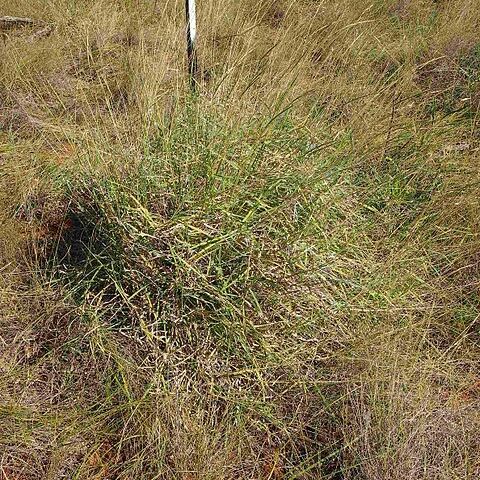Compactly tufted or rhizomatous annuals or perennials, erect from base. Leaves: ligule an unfringed or hair-fringed membrane; blade linear. Inflorescences terminal or axillary, solitary or paniculate racemes; raceme fragile (easily broken at joints between segments), spatheate; raceme internodes and pedicels stout, thickened upwards, sometimes wholly or partially fused together and often concave on one side to form cavity into which sessile spikelets are embedded. Spikelets paired, with one sessile and the other pedicellate, heteromorphous; spikelet pairs clustered on segments of rachis, the segments arranged end to end. Sessile spikelets as per lower glume, dorsally compressed, sometimes embedded in rachis cavity to create terete segment, glabrous or hairy with margins not pectinate; callus at base of segment truncate with a prominent central peg; glumes very dissimilar, the lower glume oblong, elliptic, lanceolate, ovate, oblanceolate or obovate, convex to flattened on back, obtuse or emarginate, smooth, rugose or areolate, indurated, cartilaginous, stiffly herbaceous, membranous or chartaceous, the upper glume oblong, elliptic, lanceolate, ovate, acute, acuminate, mucronate or obtuse, sometimes keeled, chartaceous, crustaceous or membranous; florets 2, the lower floret reduced to a membranous, hyaline lemma, sterile, palea absent, the upper floret bisexual, with lemma entire and membranous, with palea slightly shorter than lemma. Pedicellate spikelets: florets 2, male or sterile, ± similar to sessile spikelets, or larger or reduced to glumes; pedicel fused with or free from rachis. Caryopsis oblong, dorsally compressed.
More
Perennial, rarely annual. Culms robust, tufted, often branched. Leaf blades linear, flat; ligule short, membranous. Inflorescence of racemes, these usually axillary and aggregated into a spathate compound panicle, rarely terminal. Racemes cylindrical or flattened, fragile, horizontally articulated; rachis internodes clavate to pyriform, base truncate with central peg, spikelets paired, one sessile, the other pedicelled or occasionally in triplets of 2 sessile and 1 pedicelled. Sessile spikelet closely appressed or sunk in hollow in rachis, usually longer than adjacent internode; lower glume papery to leathery, ± flat, smooth or sculptured, marginally 2-keeled, keels winged at least at apex; lower floret barren, with or without a small palea; upper floret with entire awnless lemma. Pedicelled spikelet varying from well developed to rudimentary or absent; pedicel oblong, clavate or leaflike, free or partially or fully adnate to rachis internode. x = 9.

